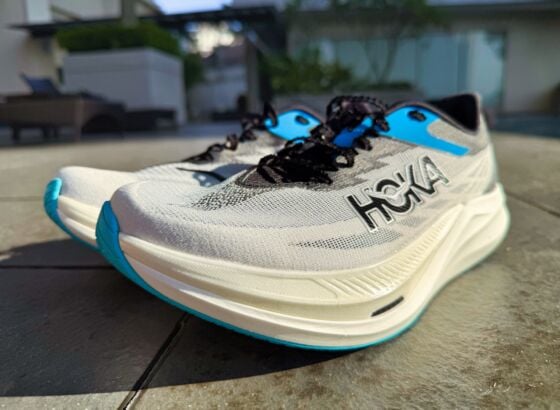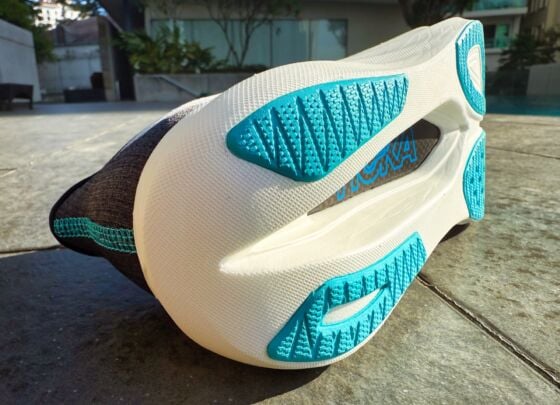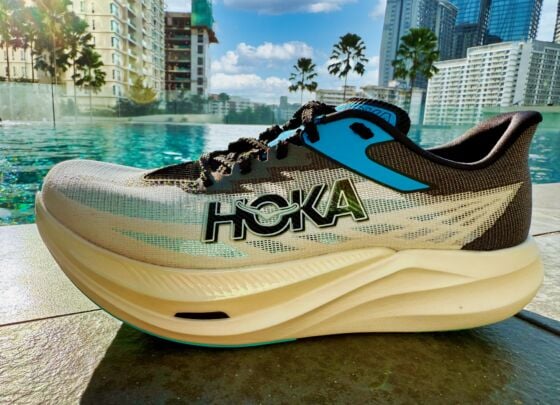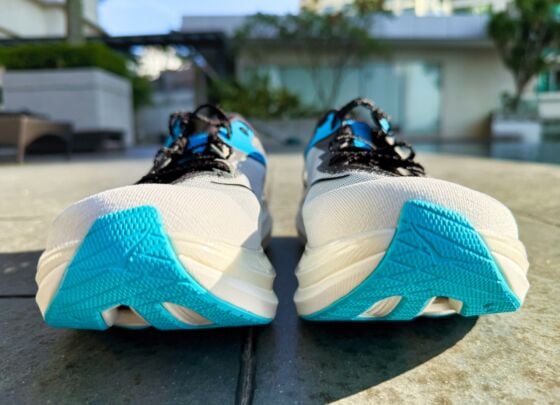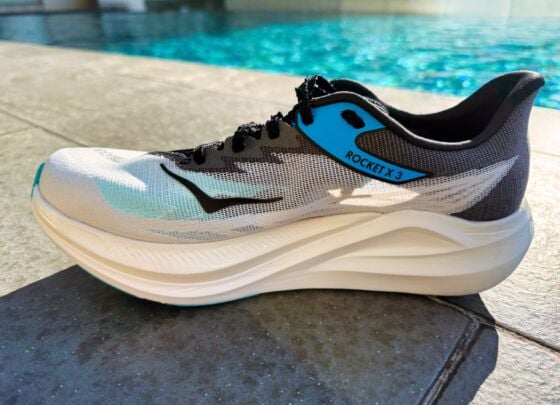Hoka One One HOKA Rocket X 3 review
Hoka One One HOKA Rocket X 3 Verdict
The pros
- New upper is a lot more comfortable than previous versions
- Increased stack heights result in deeper cushioning
- Ride is soft enough for a marathon
- Same price as v2
- Stable ride
The cons
- Not a very accommodating toe box - you need to go a half size up
- Soft midsole scrapes and punctures easily
- Feels slower than v2
Rating breakdown
Facts / Specs
Size/Fit
Cushioning & ride
Usage
Who should buy the Hoka One One HOKA Rocket X 3 ?
If you’re looking for a long-distance racer with a stable ride, the Rocket X 3 is a good option.
If you found the Rocket X 2 too firm and too stiff, the Rocket X 3 addresses those aspects.
Who should not buy the Hoka One One HOKA Rocket X 3 ?
If you’re hard on outsoles, the Rocket X 3 will not be durable enough for you.
If you want a feather-light racer, you’ll find the Rocket X 3 too heavy for you.
Hoka One One HOKA Rocket X 3 Introduction

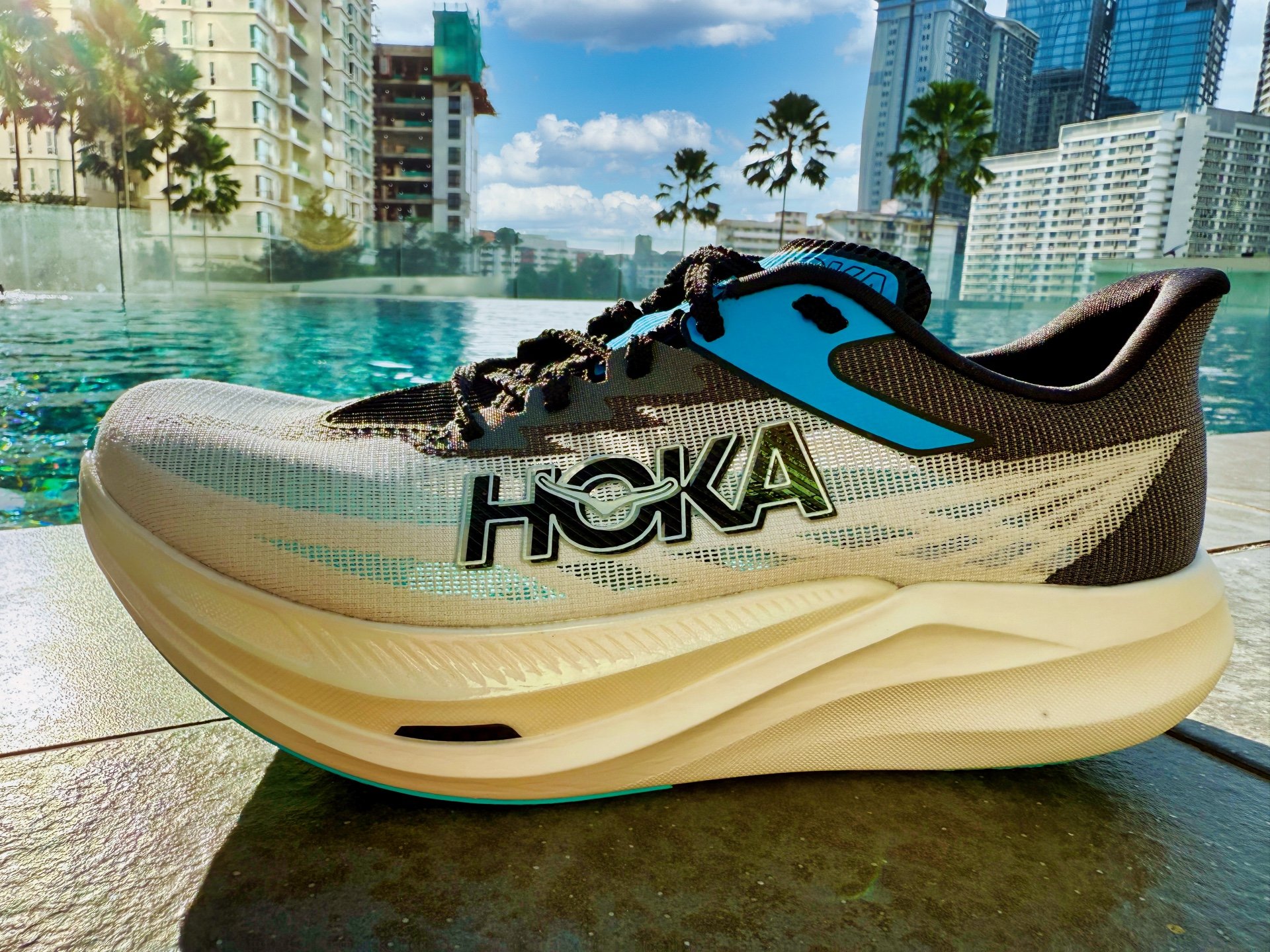
HOKA stumbled into the plated era earlier than most brands. HOKA was ahead of everyone except Nike. The Evo Carbon Rocket was launched in 2019 but it was more of a racing flat with a plate jammed into it. It only had a 26 mm heel stack height and a 2 mm drop. Its EVA midsole was very firm and didn’t provide much energy return.
The Evo Carbon Rocket was then split into 2 separate super shoes: the Carbon X (2019) and the Rocket X (2020). After 3 iterations, the Carbon X was discontinued but the Rocket X series is still going strong.
The Rocket X is not the top of the range HOKA carbon racer but it’s the “friendliest”. Most runners will find the Cielo X1 2.0 (first launched in 2024) far too unstable. The Rocket X has a more traditional geometry with a flatter midsole design.
The HOKA Rocket X 2 has been one of my top carbon-plated racers of the past 3 years. It has a stiff carbon plate that provides plenty of propulsion and a soft, bouncy PEBA midsole with loads of long-distance comfort. I’ve raced a marathon in the Rocket X 2 and I wouldn’t hesitate to use it for another.
It’s been over 2 years that we’ve had to wait for the Rocket X 3. It weighs 227 g (8 oz) for a men’s US 9, which is 8 grams (0.3 oz) lighter than the Rocket X 2. Its price remains $250 which now makes it one of the cheaper carbon-plated racers.
Hoka One One HOKA Rocket X 3 First Impressions

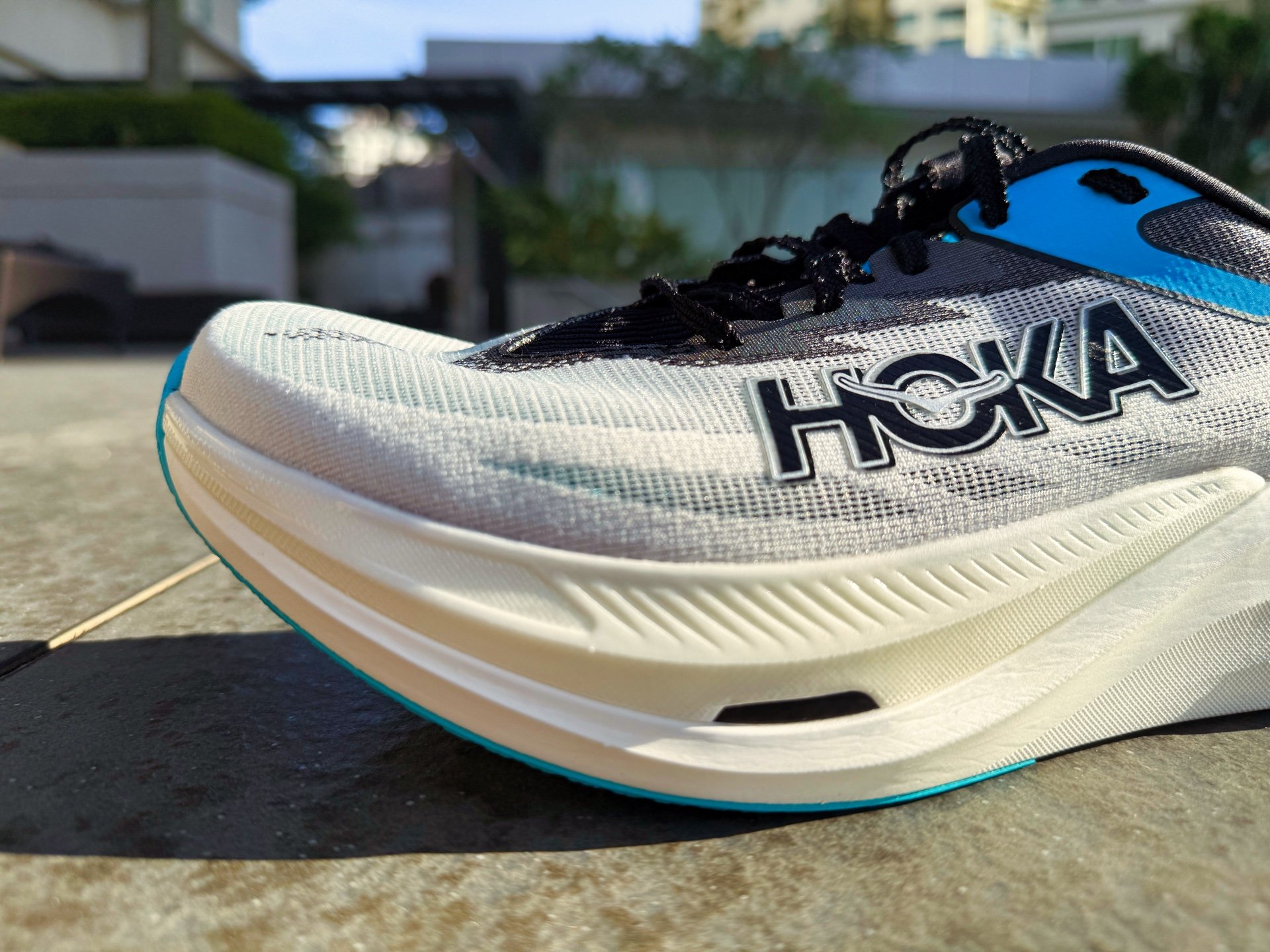
My first run was an all-out half marathon race. The first thought that came into my mind was that the ride felt softer and less aggressive than version 2. The midsole of the X 3 definitely felt more squishy and it took greater effort to get down to my half marathon pace. I didn’t feel the prominent forefoot rocker that I felt in the previous version so transitions felt more relaxed.
During the race, there was a hollow sound coming from the bottom of the shoes. After the race, another runner said that it sounded like the carbon plate was hitting the ground. When I inspected the outsole, the foam in the centre of the rearfoot had been ripped to shreds- there was a big chunk of foam missing. The hollow sound came from the centre cavity where the foam had been grated down by the road.


My finish time was 1:32:49, which was a bit disappointing for me considering I had no injuries and training had been going well (far from my 1:24 PB in the Alphafly 3). I wouldn’t use the Rocket X 3 for another half marathon because it doesn’t feel aggressive enough.
Hoka One One HOKA Rocket X 3 Upper


The Rocket X 3’s upper is a lot more comfortable than the X 2 and it feels similar to a training shoe upper. The upper mesh is softer and it conforms to your feet better than the plastic-like material of the X 2.
The bad news is that there’s a lot more padding in the tongue and the collar so it soaks up sweat more easily. Heel lockdown is still very good though. The tongue is no longer semi-gusseted but it has wide wings to prevent lateral slide.
The fit of the Rocket X 3 is still a narrow one and I went up a half size from my normal 27 centimetres because of the narrow tow box. The length is also a bit shorter than most running shoes so most runners should size up to get a comfortable fit.
Hoka One One HOKA Rocket X 3 Sole Unit


While the sole of the Rocket X 3 doesn’t look very different to the X 2, there are 2 big differences under the hood: the midsole densities and the plate stiffness. These 2 changes have altered the ride significantly.
The new, softer density foams in the midsole, make the ride of the Rocket X 3 one of the softer ones. It’s a dual-density midsole with the upper layer being softer than the bottom one. Its ride is not as squishy as the Endorphin Elite 2/Adios Pro 4 but it’s far softer than the 2 Metaspeed racers, the Hyperion Elite 5 and the SC Elite v5.
I think this was the wrong move. The Rocket X 3 has lost the punch that made the previous version feel so propulsive. It doesn’t feel as aggressive and transitions definitely feel slower. On the plus side, the ride is plusher and it feels more comfortable at slower paces.
When I’m running at my target marathon pace (4:15 per km), it feels more in the wheelhouse of the Rocket X 3. The soft ride makes it difficult for me to get down to my threshold/half marathon pace. V02 max workouts like hill sprints are also not suitable for the Rocket X 3.
I think these changes will suit slower runners (4 hour+ marathon times) more than faster runners because they spend more time on their feet during races and they need more comfort. For faster runners who don’t need much support or stability, the Cielo x1 2.0 is the better HOKA racer.

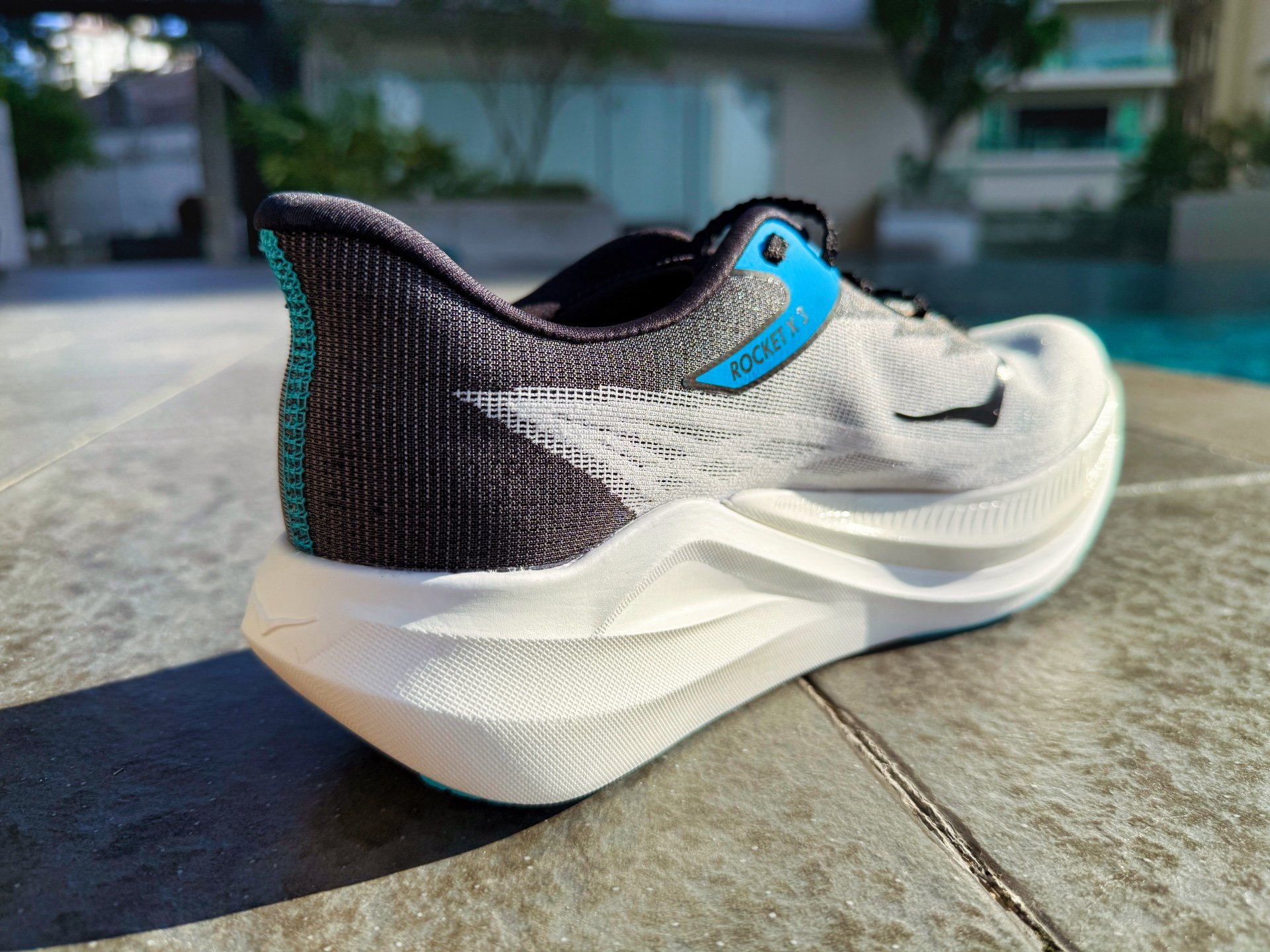
The carbon plate has a new design with a wing that extends out on the lateral side and you can see the edge of the wing. This new design is to improve stability and I do think that it does a good job. There are also raised sidewalls to keep your feet centred. The Rocket X 3 is the most stable carbon racer I’ve tested this year.
The new plate has a long slit in the middle of it. This makes it even more flexible and less snappy than the previous version. This is the main reason the forefoot rocker doesn’t feel as prominent and it also results in a weaker springboard snap (less speed assistance).
The soft outsole is not durable because of all the soft, exposed foam. This is a racer that you have to reserve for racing only and I don’t expect to get a lot of mileage out of my pair since I’m particularly hard on outsoles. Traction is good on a variety of surfaces including the track. I also had no issues with traction on wet roads.
Hoka One One HOKA Rocket X 3 Conclusions
The Rocket X 3 is a mellower racer than the X 2 and it’s more suited to longer races. It has a softer ride, a more flexible plate and a plusher, bulkier upper. The changes that HOKA has made has resulted in a racer better suited to slower runners rather than faster ones. It definitely has a stabler and a friendlier ride than its predecessor.


The Rocket X 3 is a disappointing update for me and I won’t be using it for an important race. I would take the X 2 over the 3 any day of the week. When I lace up the X 3, it doesn’t feel like a super fast, aggressive carbon racer; it feels like a super trainer.
The big weakness of the Rocket X 3 is its outsole durability issue. The exposed midsole foam shreds like butter on a hot pan on normal, tarred roads. This means that you won’t get as many miles out of the X 3 as competitors. They need to add extra outsole rubber to protect the soft foam in the next version.

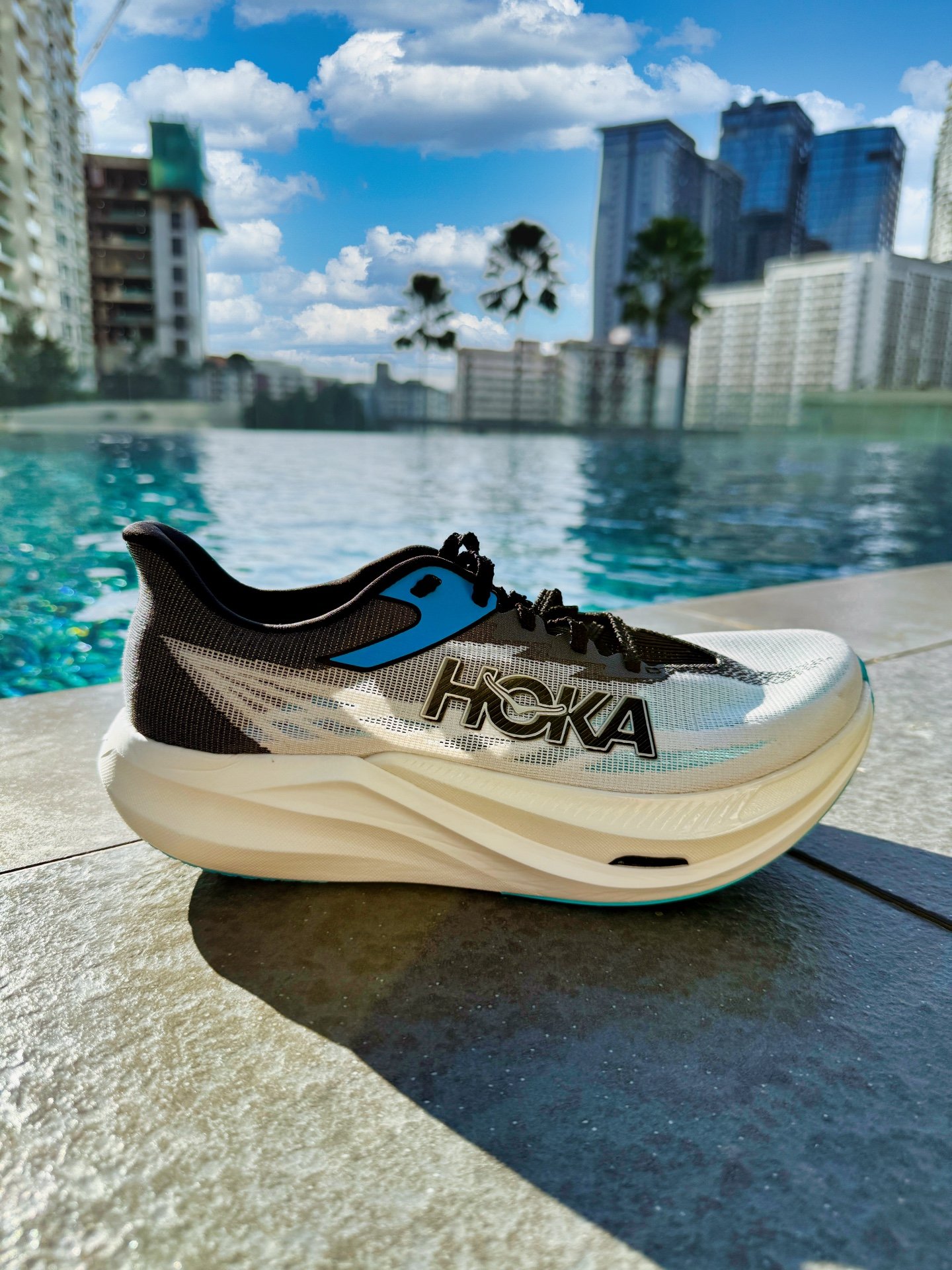
Despite the changes, I think the Rocket X 3 is still a better option for me than the Cielo X1 2.0 which is far too rockered, unstable and flexible for my running style. Most runners will also prefer the Rocket X 3 over the Cielo X1 2.0. And it’s $25 cheaper than the Cielo X1.
How does the HOKA Rocket X 3 compare?
Why you can trust us
As editorial policy, we do not accept free samples from companies.We purchased this pair of Hoka One One at Running Warehouse with our own money.
This page contains affiliate links. As an Amazon Associate we earn from qualifying purchases. Read more about our policy.
Reviewed by Brandon
Brandon is a South African marathoner based in Malaysia, where the humidity is high and his shoe rotation is even higher. He’s a runner with a full-blown addiction to running shoes. Most people buy shoes to run—Brandon runs to justify buying more shoes. If there’s a new drop, he’s probably already logged 100km in them.
User feedback (0)
Similar shoes to Hoka One One HOKA Rocket X 3











